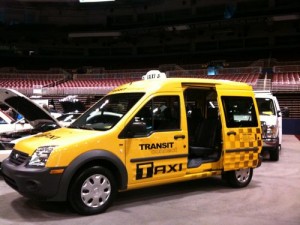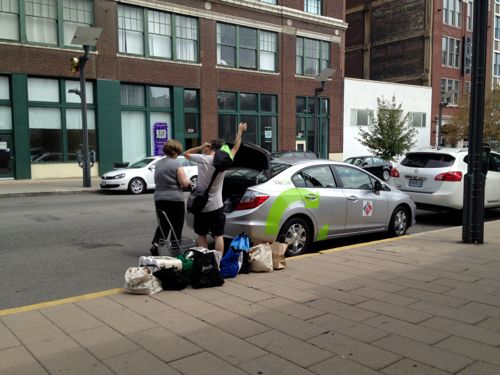St. Patrick’s Day Myths; Early St. Louis Irish History
Top o’ the mornin’ to ya. I knew the recent non-scientific Sunday Poll was going to have a low response, the more controversial the subject, the more responses.
Q: Agree or disagree: Irishman Saint Patrick is celebrated today for bringing Christianity to Ireland, driving out snakes.
- Strongly agree: 1 [6.67%]
- Agree: 3 [20%]
- Somewhat agree: 1 [6.67%]
- Neither agree or disagree: 0 [0%]
- Somewhat disagree: 0 [0%]
- Disagree: 2 [13.33%]
- Strongly disagree: 6 [40%]
- Unsure/No Answer: 2 [13.33%]
Most correctly disagreed. I say correct because everything stated in the poll question was false:
- Patrick wasn’t Irish
- Christianity was already in Ireland before Patrick
- Ireland, an island, didn’t have an literal snakes
This reminds me of grade school in the early 70s, cutting shamrocks out of green construction paper, etc. We were taught myths that just aren’t accurate — including the color green!
The following is from the history.com article titled: “St. Patrick’s Day Myths Debunked“:
- Myth: St. Patrick was Irish.
Though one of Ireland’s patron saints, Patrick was born in what is now England, Scotland or Wales—interpretations vary widely—to a Christian deacon and his wife, probably around the year 390. According to the traditional narrative, at 16 he was enslaved by Irish raiders who attacked his home; they transported him to Ireland and held him captive there for six years. Patrick later fled to England, where he received religious instruction before returning to Ireland to serve as a missionary. - Myth: St. Patrick was British.
- Myth: St. Patrick brought Christianity to Ireland.
- Myth: St. Patrick banished snakes from the Emerald Isle.
- Myth: Green has historically been associated with St. Patrick’s Day.
- Myth: Popular St. Patrick’s Day festivities have their roots in Ireland.
- Myth: Corned beef is a classic St. Patrick’s Day dish.
You can click the link above to read the debunking of each myth.
Irish-American immigrants celebrated St. Patrick’s Day as a show of their pride — despite lots of anti-Irish discrimination:
The refugees seeking haven in America were poor and disease-ridden. They threatened to take jobs away from Americans and strain welfare budgets. They practiced an alien religion and pledged allegiance to a foreign leader. They were bringing with them crime. They were accused of being rapists. And, worst of all, these undesirables were Irish. (history.com)
Sounds similar today’s anti-immigration rhetoric.

Bryan’s sister Anne Mullanphy married Thomas Biddle. After his death she donated the land for St. Joseph’s church in what’s now known as the Columbus Square neighborhood. Most Irish immigrants were poor living in tenements & flats stretching west to Jefferson, including what became known as the former [Kerry] Patch neighborhood:
The neighborhood’s boundaries shifted over time—Irish families moved farther west, as German, Polish, and Eastern European immigrants settled around them after the Civil War. But during its heyday, the Patch was generally described as being between N. 15th Street and Hogan Street, Division Street and Cass Avenue. The heart of the neighborhood was squeezed into the tight rectangle between 16th and 18th streets, Cass Avenue and O’Fallon Street—a few blocks east of St. Stanislaus Kostka Church in near north St. Louis.
In the early 19th century, emigrants left Ireland to escape English political oppression. By 1847, during the height of An Gorta Mór, The Great Hunger, they flooded out of the country to escape starvation and death. As Diamond notes, the immigrants’ sheer numbers, as well as their religious affiliation—Catholic—did not endear them to second- and third-generation American Protestants, specifically the nativist Know Nothing movement, founded in 1845, the year the potato famine began. The level of disdain and outright hostility toward Irish immigrants in major American cities, including St. Louis, was reflected in ads for housekeepers, which indicated “NO IRISH NEED APPLY.” Earlier Irish immigrants who had blended into St. Louis society also castigated the new arrivals for not working hard enough to assimilate, Diamond adds. Patchers responded by banding together. (St. Louis Magazine)
Once Irish neighborhoods were razed for public housing projects: Cochran Gardens, Carr Square, and Pruitt-Igoe.
— Steve Patterson


